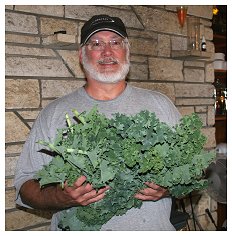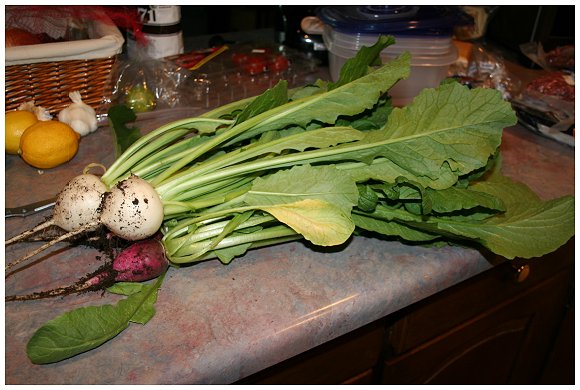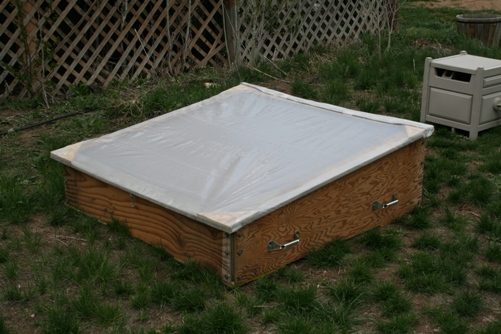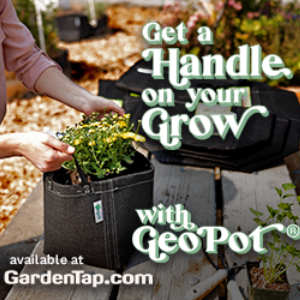I love the idea of extending the vegetable gardening season so let me lay out a basic plan for you to experiment with your first winter vegetable gardening adventure. It’s September, and if you haven’t already put your winter vegetable crops in, now is a good time to do it. So, follow along and let’s see if we can’t get you harvesting cold hardy vegetables well into the winter months.
Where to Plant
Someplace with a southern exposure would be an ideal place to plant your winter crops. Sun in the winter will hang low in the southern skies, so select a spot that will be protected from prevailing winter winds, but exposed to the south. If your spot is inclined from south to north, that is even better for more exposure to the winter sun. Plant in the soil and not in raised beds. A raised bed warms up quickly in the spring, but its exposed sides cool down quickly with the onset of winter, so keep your winter vegetables in the soil at ground level. This allows you to take advantage of natural energy stored in the soil.
Planting close to the house is a good idea. No sense trudging through too much snow to get your veggies, especially if the winter wind is blowing hard. Speaking of wind, make your selection of a winter garden bed such that you’re not going to get snow drifts piling up around it. Again, there is no sense in making your harvest a challenge. Okay, we have our spot. Now, let’s take a look at what we might plant.
What to Plant
The objective is success, but we also want variety, so let’s go for easy to grow vegetables that are cold weather hardy, but aren’t the same type of crop. Here are my suggestions based on my own experience.
Bok Choi
Bok Choi is an easy to grow producer of delicate white stalks and greens for stir frying. You’ll find that this cultivar usually germinates well in warm soil and grows to maturity quickly. This might be a good candidate for a late fall and early winter harvest.

Kale
Kale is a very cold hardy vegetable that is a heavy producer of greens for soups or for making a “mess of greens” in the crock pot. Given a protected spot near the house, many varieties of kale can make it well into the winter without any supplemental protective covering. With protection such as a row cover, kale can survive throughout the entire winter, even in sub-zero weather.
I must emphasize that kale is a good producer of greens. For the space it consumes, kale provides lots of food in return. Also, since kale enjoys cool and cold weather, you’re also likely to get some good growth in the late fall and early winter, thus allowing you to have succession harvesting from each plant as it grows new leaves from the top to replace those you removed from below.
Turnips

Turnips are a root crop for both roots and greens, turnips can have flesh that is white, red or gold. You can harvest some of the tops if you like, and let the roots continue to form. Turnips are a relatively quick developer, and since the root is underground, they’ll hardly notice the first few frosts. You can also mulch heavy on top of the soil to help keep the roots in good shape for harvest, but dig them before the ground turns to stone.
Broccoli
Broccoli is a plant that some people claim “can’t be killed” and that’s saying a lot where I live in southeast Wyoming. Broccoli is a cool weather crop that is very resistant to the cold. I’m sometimes disappointed with the limited yields from each plant, but I’m never disappointed with its ability to withstand cold weather. Any of the cruciferous vegetables like broccoli will come to life when the heat of summer passes, so they all need to be considered as candidates for a fall and winter vegetable garden.
Beets
Beets are another root crop, but very different from turnips in taste and texture. Beets offer greens as well as root, so treat them similar to turnips. I enjoy beet greens as I think they are a cut above greens like chard. Beet tops will last longer in cold weather than turnip tops, so harvest beet greens after your turnip tops, and plan to dig up the roots before the ground freezes solid.
Lettuce
Lettuce is often thought of as too delicate for winter. I’ve taken lettuce seedlings to single digits before showing signs of trouble. With many varieties to choose from, you’re bound to find something that pleases you. September is the perfect time to plant lettuce as it will germinate quickly in the warmth, and be as happy as can be in the cooler fall weather. Being a “low flying” veggie, lettuce can be easily protected by row covers and cloches.
Protection
The most important part of the plan for winter vegetables is how you’re going to protect them. If you have a greenhouse, you’re in great shape. The single layer protection of a greenhouse will satisfy most of your needs, right up until winter really starts to set in. After that, you’ll want to have double protection from the cold. In the absence of a greenhouse, create a garden tunnel or hoop house so you have a relatively large area under which you can work.
If some sort of sturdy gardening structure isn’t in the cards, then row covers will likely be the order of the day. Here are various methods of covering your plants. If you’re using a gardening structure, then many of these can simply be set in place. If these will be the only protection you offer, then make certain they are held down well to prevent wind and critters from upsetting them and exposing your vegetables to harsh winter winds.
Row Covers
Row covers are a simple sheet of plastic suspended over your plants using hoops or frames is a great way to cover a row or a bed.
Cloche
Cloche is a type of tent that covers individual plants instead of rows or beds. Plastic sheeting works well and I’ve also used gallon glass jars and clear plastic drum liners with support stakes inside.

Cold Frame
Cold frames are a more formal and permanent type of protection that is perhaps the most traditional type of protection known. With a top of plastic sheeting or glass, a cold frame provides excellent protection from the weather and can be used outside on its own or inside a greenhouse, hoop house or garden tunnel. Think of a cold frame as a miniature greenhouse.
Sheets and Blankets
Sheets and blankets are an option when you encounter an unexpected cold snap and you’d like to offer a bit more protection from the cold during the night. Just remember to take them off of your row covers and cloches first thing in the morning so you’re not inhibiting sunlight from warming up your plants. I pick up old sheets and blankets at garage sales so my thermal layer for the night doesn’t cost me anything to speak of, and I’m not concerned about them getting soiled.
Management
Now that you’re all set with the proper location, right crops and the right type of protection, let’s look at the basics of managing the whole affair into the winter months. There are really only four tasks to be concerned with: watering, venting, supplemental heat, and harvesting. Let’s briefly look at how each of these tasks comes into play to manage your winter vegetable garden.
Watering
Stop watering about the time your first frosts appear on the scene. The soil will hold plenty of moisture for the plant as it goes into something that resembles dormancy. If you keep watering, then expect dead, droopy, dark green mushy plants after the first hard freeze, as the excess water in the plant tissues will freeze and burst the cell walls.
Venting
Even though you’re trying to battle the winter weather, there will be times when the day will be a bit warmer and the sun will be intense. If your row covers, cloches and cold frames aren’t vented, you might prematurely cook your crops. Allow for a way to vent your protective coverings, as this will be necessary on occasion, especially at the beginning and end of the winter season when the chance of having a nice spring-like day is more likely.
Supplemental Heat
I mention supplemental heat with hesitation, but it may be something to consider for especially cold weather and plants like lettuce or chard that are less cold hardy than plants like broccoli and kale. My suggestion is nothing fancy, just a 75 watt light bulb or two under the row cover, and then place sheets or blankets over the top of that, just to make it through the bitter cold of the night. Be careful with placement of the light bulbs so you’re not burning plants or melting plastic.
Harvesting
This is the most important factor next to watering. Allow your plants to reach above freezing temperatures for several hours before attempting to harvest. I like to see air temperatures around the plant reach into the 40s F before I attempt harvesting. Doing so allows the plants plenty of time to recover from the chilly nighttime lows.
Well, there you have it, a basic planned approach to winter vegetable gardening that will at least give you a taste for what to expect. It’s difficult to describe what to expect with gardening in the colder months of the year, sometimes you just have to dive in and experience it for yourself. Just keep in mind that when it comes to the coldest parts of the winter, your objective isn’t to grow vegetables, it’s simply to harvest them. So, plant plenty for harvesting and take good care of them.
Good luck if this is your first foray into the world of winter vegetable gardening. Don’t get nervous as the first snow flies. If you’ve prepared yourself with proper selection of plants, grown them to maturity just as winter sets in, kept them protected well and avoided watering them, then it’s likely that you’ll do just fine your first time out. Irrespective of the outcome, you’ll be amazed at how well common vegetables can stand up to cold weather. So, be brave and help your vegetables “go where no vegetable has ever gone before.”
Clair Schwan is an experienced vegetable gardener who favors the use of simple methods of protection to extend the vegetable gardening season. Using his unheated greenhouses, he harvests well into the bitter cold winters in Wyoming.
Related Articles & Free Email Newsletter
Making Your Own Cloche from Just About Anything
Preserve Garden Produce for Delicious Winter Meals




Comment here